Apple iPhone 6 vs Sony Xperia Z3
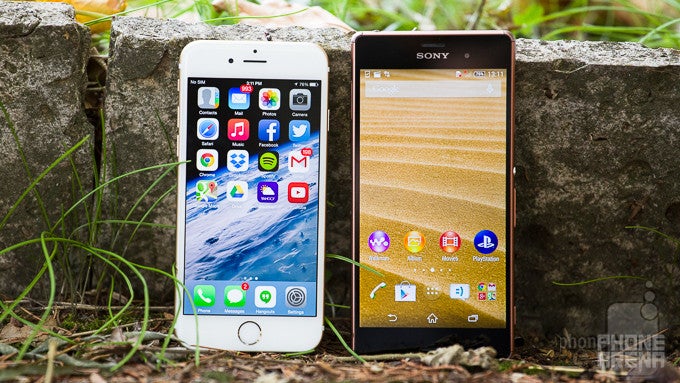
Introduction
It's time for us to clash the 4.7” iPhone 6 with Sony's flagship for the season – the 5.2” Xperia Z3. Sony's phone has a bunch of tricks up its sleeve that will help it against the popularity of the iPhone line, like a waterproof chassis, 20 MP camera, and stereo speakers, so let's brawl these two out, and see who comes out on top...
Design
Strutting premium thin chassis, the iPhone 6 and Z3 are some of the best-looking devices on the market, and Sony's phone is waterproof at that.
The Xperia Z3 is not a small phone for its 5.2” screen diagonal, especially when you compare it with some screen-to-phone size champs at the same display size. This is due to the fairly wide top and bottom bezels, which holds true for the iPhone 6 as well, but since it has a smaller screen, the iPhone 6 is still much easier to use with one hand, against the Z3. Those comparatively wide bezels on both handsets are there for a reason, though – in the case of the Z3 they house waterproof stereo speakers, while the iPhone 6 flaunts a state-of-the-art fingerprint sensor in the circular home key underneath the display. The two phones are both rather razor-thin and pretty light, though, which helps acknowledging them as elegant, despite the unimpressive screen-to-phone ratios.
The iPhone has a finely crafted, premium metal design, but Sony's creation, with its rounded corners and glass chassis, is a looker, too, plus it sports a high IP68 waterproof rating.
Looking around the sides, we find the signature OmniBalance design circular power/lock key at the right of the Z3, which is a bit wobbly, and requires you to bend your thumb to feel and press, while the lock key on the iPhone 6 is placed comfortably right under the tip of your thumb. The Z3 has a lot more going on at the right side, as you can find the somewhat too thin volume rocker there, the microSIM and microSD slots, and the dedicated two-stage camera shutter key. Both the card slots, and the microUSB port on the left are covered with protective flaps, ensuring the waterproof chassis, and if you are too tired to pry them off for charging the phone, there is a magnetic connector on the left of Sony's phone for USB charging with a separate cable.
Looking at the premium glass or aluminum backs, what we don't like on both handsets is the camera placement in the upper left corner, as it is too near the edge, and very easy to cover with your finger when filming.
Displays
Marred by decrepit color presentation compared to the iPhone 6, the Z3 screen makes it up with size and resolution.
The iPhone 6 has a 4.7” panel with 750 x 1334 pixels resolution, which returns a lower, 326ppi pixel density, compared to the Z3's 5.2 inch panel at 1080 x 1920 pixels and excellent 424ppi. Still, the pixel density on both displays is more than enough for any need, and small text, as well as tiny details look sharp and discernible.
Here the iPhone beats it – its colors are very accurate, while the Xperia Z3 not only has most of the colors out of whack, but its screen is very cold, too. Sony clarified that it actually did this on purpose, as the trend for TV screens is now colder whites, which are recognized as brighter by the brain, compared to the natural-looking ones. Be that as it may, we'd prefer to go shoe-shopping on the iPhone, rather than the Z3. Granted, you can adjust the white balance of the Z3 panel from the display settings, done by boosting the intensity of the three basic colors, which looks a bit artificial.
On the other hand, Sony's Z3 display tech allowed it to achieve more than 700 nits of brightness in our measurements, which also results in better outdoor visibility than the iPhone 6. In addition, the new LED backlighting is even more power-efficient than before. Combined with the “memory on display” tech, which doesn't use graphics processing power for refresh when displaying static images, the Z3 screen allows for some record battery life in the category, color-credible or not, but more on that later.
As for viewing angles, since we have quality LCD panels, both handsets are showcasing well here, with a slight advantage for the iPhone 6. Sony's 5.2” display can also be operated with gloves on in a super-sensitive mode, which could come in handy during the winter months.
Interface
The Xperia interface is getting a bit long in the tooth, while the iPhone 6 offers some useful modes like Reachability, when it comes to one-handed usage.
Sony's Xperia interface has been on the company's Android phones for a while now, and is one of the most functional and yet simplistic manufacturer overlays. It adds some light multitasking tools like the Small Apps suite, which lets you hover up to five windowed apps, resize and move them around. The iPhone 6 doesn't sport that kind of interface frivolity, but its polished Control and Notification Centers are a joy to use, unlike Sony's archaic-looking connectivity switches in the notification bar that require a bunch of sliding and swiping to get to, for instance.
Apple's light approach to the widget system that can be found in the Notification Center is much more open now, allowing for third-party apps to occupy this space, and push messages or interactive notifications to you. It is still not a functional match for Android's full-blown widgets that can be splashed all over numerous home screens, yet is a less intrusive approach, Apple-style.
The only thing resembling one-handed mode on the Xperia Z3 is the ability to shrink the keyboard to the left or right on the display, so you can reach the keys easier with your thumb only. The iPhone 6, on the other hand, sports the so-called Reachability mode, evoked by double-tapping the home key, which slides the whole upper part of the interface down, so you can easily key in that web address or email recipient without stretching all the way up. You can also swipe right from the left edge of its screen, and this gesture will serve as the back button in the respective app, instead of having to stretch all the way down to hit back on the Z3, for instance. The iPhone 6 also has an easy Display Zoom mode, which lets you quickly enlarge everything on the screen, making it easier to read or tap on.
Processor and memory
Despite the much higher CPU clock of the Z3 against the A8 processor, the interface of the iPhone 6 feels smoother. You are going to cough up more for that extra memory, though.
You won't be jonesing for more power with these two, as they both have some pretty competitive processing muscle under the hood. The iPhone 6 is pushed by a 64-bit Apple A8 processor, clocked almost twice lower than the 2.5 GHz Snapdragon 801-AC in the Z3, yet showing comparable performance in synthetic benchmarks. The stock apps of iOS 8 are optimized for 64-bit computing, and the interface just flies seamlessly around, no matter what you do, while the Z3's Xperia UI lags for a fraction of a second here and there, though it might have something to do with the software optimization, rather than the capable silicon inside. Apple doesn't list the amount of RAM in its phones, but 3rd party disassemble efforts pegged it at 1 GB, while the Z3 has 3 GB – that doesn't mean that you can't load tens of apps on the iPhone and go back and forth without issues. The Z3's Small Apps suite is no doubt aided by the larger amount of RAM, though, especially if you decide to juggle more than two or three of those at once.
As for internal memory, the Z3 ships with 16 GB, of which 12 GB are user-available, while the iPhone 6 has 16 GB, 64 GB and 128 GB configurations. Sony's phone, however, has a microSD slot for adding more storage on the cheap.
Internet and connectivity
With a record number of LTE bands, the iPhone 6 supports a truly globetrotting experience.
Apple's Safari is a great browser when it comes to page rendering, introducing an easy to toggle Reader View mode, which strips the websites of unnecessary distractions like pics and ads, leaving you with a clean, text-only article. You can't have Adobe Flash on it, for those situations you might need it, but this can be remedied via some 3rd party iOS browsers. The only gripe we have with Safari is the scrolling inertia, which is far from the uninterrupted scrolling that happens in the stock Chrome browser of the Z3. Sony's phone also renders pages as a champ, and offers smooth scrolling, panning and zooming. Chrome doesn't support Adobe Flash in its turn, but you can install another browser from the Play Store, and sideload it from Adobe's website.
When it comes to cellular connectivity, the iPhone 6 is the undisputed champ with support for no less than 24 LTE bands with up to 150 Mbps download speeds, in addition to the 42 Mbps HSPA+ network support. Xperia Z3 also supports LTE connectivity, but mostly Asian and European spectrum. Both phones offer fast Wi-fi/ac and Bluetooth 4.0 radios, as well as A-GPS, DLNA and NFC. Apple's proprietary NFC chip is locked exclusively for the new Apple Pay system, where you can purchase stuff with a tap of the phone on the POS terminal in places like Target or McDonalds, while the Xperia Z3 has the so-called Tap&Pay service, which lets you load 3rd party payment services like Google Wallet or PayPal, and it manages the NFC chip in accordance. Wired connectivity is represented by the side-agnostic Lightning cable on the iPhone 6, while the Z3 offers an MHL port for hooking up your TV directly, if it has the same port.
Camera
The new iSight camera is the fastest performer we've tested, and performs admirably in all light situations, while the Z3 counters with the ability to shoot 4K video footage.
Sony's flagship sports a 20.7 MP 1/2.3” Exmor RS sensor with 1.12 micron pixels, like the Z2, but Sony touts that the new 25mm G Lens optics (f2.0), and other improvements under the hood, such as boasting up to 12800 ISO sensitivity. Apple also improved on the 8 MP 1/3” iSight camera with 1.5 micron pixels and f/2.2 aperture in the iPhone 6, introducing a new focusing system, and new shooting modes. When it comes to shooting speeds, the iPhone 6 camera records a shot, and is ready for another one almost instantaneously, for a fraction of a second – in fact, it is the fastest phone in that respect in our benchmarks. The Xperia Z3 is also rather quick to take a picture, though, and, since there is a two-stage shutter key on the right, you can also set it to fire up the camera app and take a picture from a locked screen, which takes just about a second or two.
Besides a built-in Time-lapse regime, the Z3 sports most shooting modes and manual adjustments that the iPhone has, such as Panorama, real-time HDR for pics and video, and then some. Some other cool regimes include Background Defocus, which aims to achieve the trendy shallow depth of field effect.
The iPhone 6 shoots great photos with slightly warm but mostly accurate, pleasant colors, and a fine amount of detail in all circumstances. The Z3 shoots 8 MP snaps in the default Superior Auto mode, and the level of detail is comparable. It manages to produce a tad more bland-looking colors than the iPhone 6. The Z3 has some flare issues when shooting against a bright light source, like a window or the sun.
When it comes to indoor shots, color presentation stays mostly natural with the Z3, while the iPhone 6 tends to go on the warm side. The images from the Xperia phone, however, look a bit too post-processed, and a tad softer than they should be, while the iPhone manages to keep detail both distinctive, and noise in check. Both LED flash modules are able to illuminate a small scene in an even manner, though the two-tone flash of the iPhone 6 appears to be slightly stronger, casting more light on the scene.
Multimedia
The larger screen of the Z3 is more conducive for general media consumption like watching movies or browsing photos, though the difference is no longer as stark as with previous iPhone editions, as the iPhone 6 now has a 4.7” panel. Both galleries offer grid thumbnail views, and allow for rich picture editing from within the apps, as well as sport plenty of sharing options. The iPhone's video playback is quite a bit more limited than the video player on the Z3, as it doesn't support DivX/Xvid/MKV files out of the box, while the Z3 plays almost every format in up to 1080p resolution, and offers extras like subtitles support, for instance.
When it comes to the music players, we'd have to give one up for the Xperia phone again, as it has a sleeker interface with plenty of equalizer and visualization options built in. The Xperia Z3 also flaunts Sony's Digital sound Enhancement Engine (DSEE), which brags to upconvert crappy tracks to a higher-resolution format - we can attest that there is a slight difference, though not as stark as if the tunes were high quality in the first place. Sony offers two waterproof stereo speakers at the front, which sound clean, but are somewhat muffled, while the iPhone 6 makes you wonder how did Apple fit such a strong, clean and high-quality speaker in such a thin phone.
Call quality
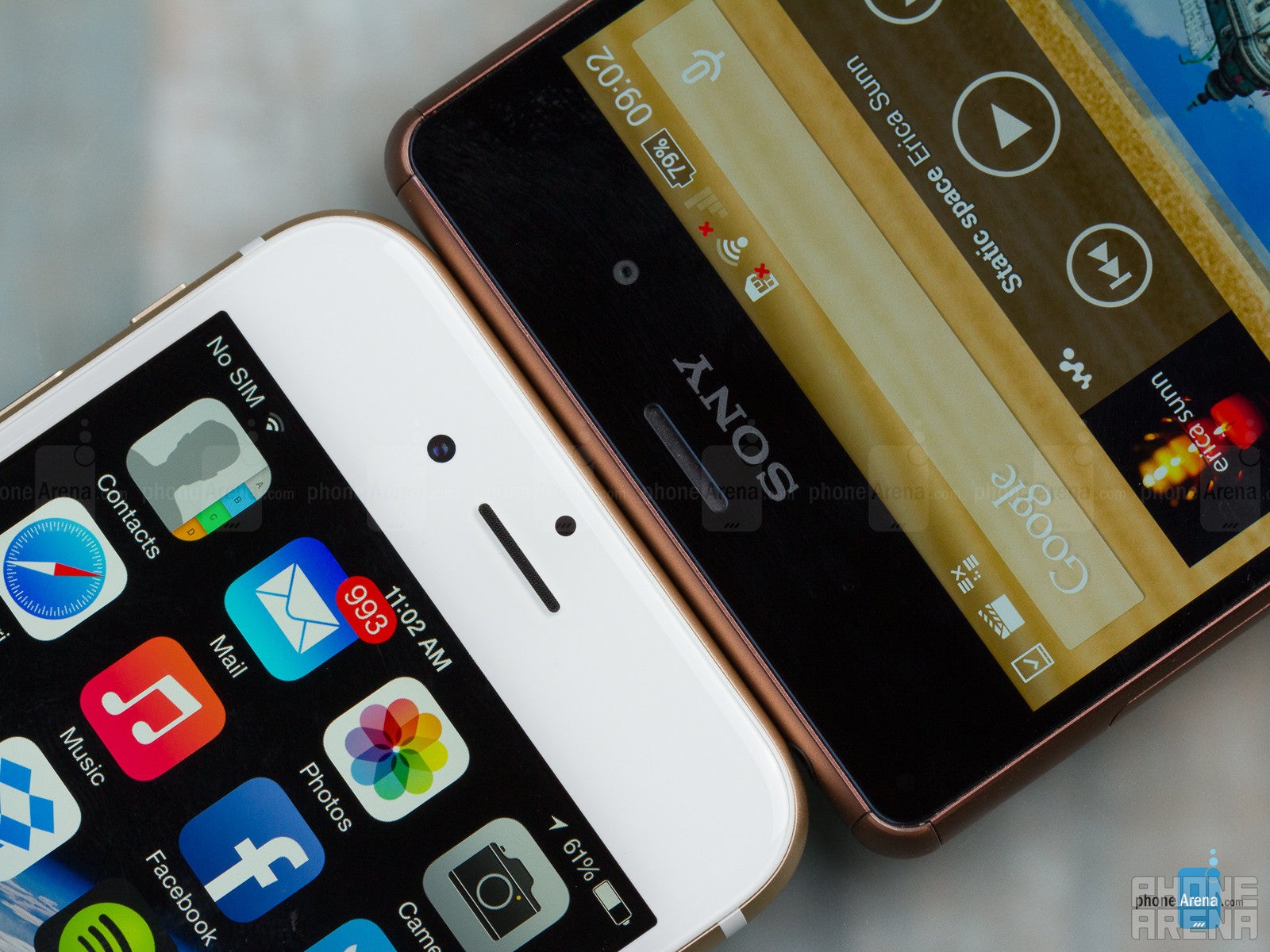
Battery
Excellent meets average – that about sums up the battery life situation with the Xperia Z3 and the iPhone 6.
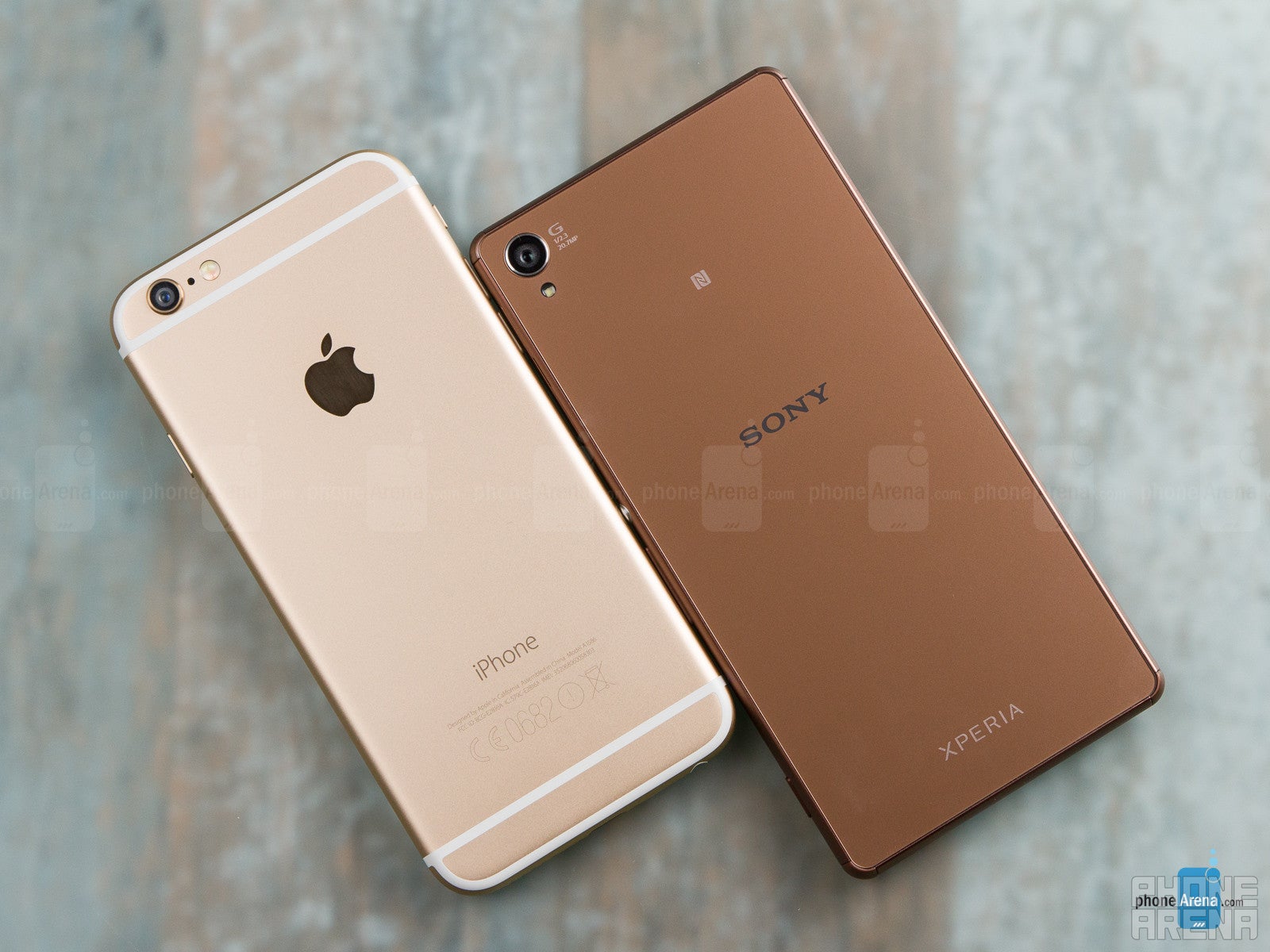
Conclusion
Both the iPhone 6 and the Xperia Z3 are the best efforts that design juggernauts like Apple and Sony managed to come up with this season, and there's no room for disappointment with either result. Thin and stylish, they look and feel premium in the hand, yet don very different experiences.
The iPhone 6 is more manageable in the hand, compared to the largish Z3, and goes almost unnoticeable in your pocket. It also offers better camera than the Z3, especially for low-light shots, and a picture-perfect screen. To these advantages, we have to add the iOS ecosystem synergy that received a boost with the unique Apple Pay purchasing system, and the fact that the iPhone 6 will more than likely depreciate in value much slower than the Xperia Z3. Sony's phone, however, has a lot going for it that the iPhone doesn't offer, if you can stomach the larger size. Granted, you don't always need a waterproof phone, or you might not care for stereo speakers, but it's nice to know these are there if needed.
We saved the best for last, though, and it is the remarkable battery endurance of the Xperia Z3. Its “two-day battery” is the best in the flagship category for now, and this got confirmed through our own benchmarks, too. Thus, if you are tired of charging your smartphone each and every night, which would happen with the iPhone 6, the Xperia Z3 should be on top of your list.

Follow us on Google News

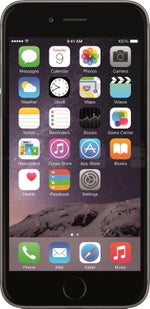
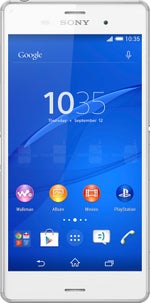









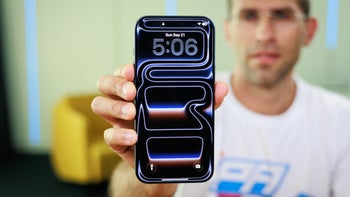
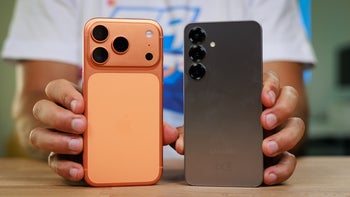
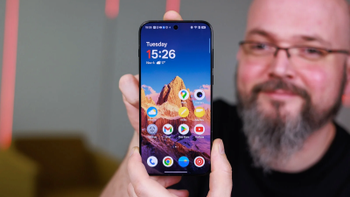
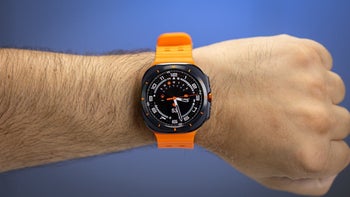

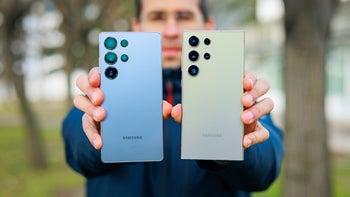
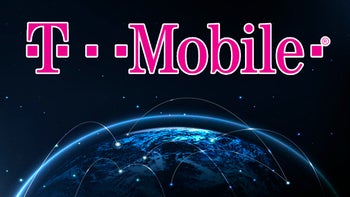
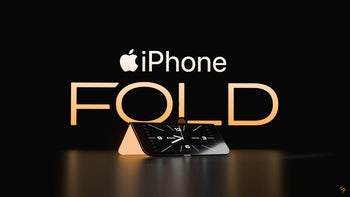
![A new Android bug is making it impossible to install new apps. Are you affected? [UPDATE]](https://m-cdn.phonearena.com/images/article/176703-wide-two_350/A-new-Android-bug-is-making-it-impossible-to-install-new-apps.-Are-you-affected-UPDATE.webp)
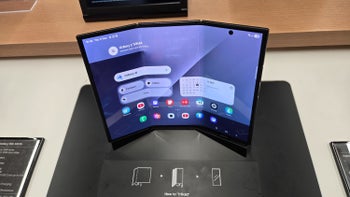
Things that are NOT allowed:
To help keep our community safe and free from spam, we apply temporary limits to newly created accounts: